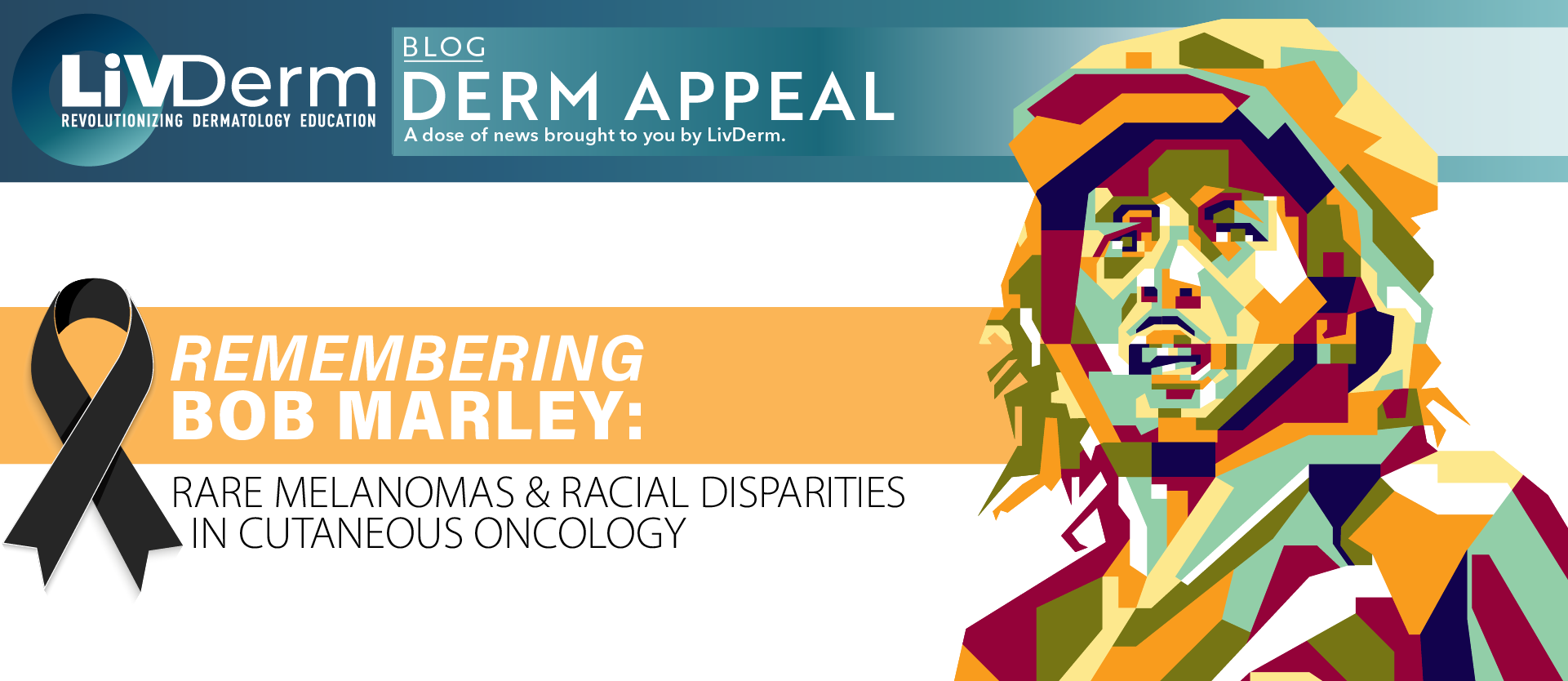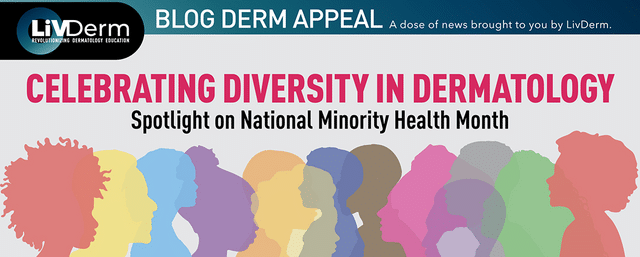Known as one of the pioneers of reggae who increased the visibility of Jamaican music across the globe, Bob Marley is less recognized for his battle with a rare form of melanoma – acral lentiginous melanoma. The story of the global pop culture figure highlights the racial disparities in prevalence and treatment of melanomas, as well as underscores the importance of dermatological differences relevant in the treatment of skin of color. Clinically relevant approaches to both diversity in dermatology and cutaneous oncology will be explored in-depth during the upcoming South Beach Symposium Part I: The Medical Dermatology Summit held between February 4-7, 2021.
Bob Marley’s Battle with ALM
Bob Marley was born February 6, 1945 in Jamaica, where he began his professional music career as a singer and songwriter which brought him international success and soon made him a reggae icon. In 1977, at the age of 32, Marley was diagnosed with acral lentiginous melanoma (ALM), discovered under the nail of his toe. Instead of amputating the toe as his doctors suggested, Marley opted to remove the nail and nail bed utilizing a skin graft obtained from his thigh. After the procedure, he continued to tour and perform for several years.
In September of 1980, he collapsed while jogging – at this point the cancer had spread to his brain, lungs, and liver. His health deteriorated quickly as the cancerous cells spread throughout his body. He sought alternative treatments, primarily based on lifestyle interventions, in Germany which failed. He died on May 11, 1981 at the age of 36 due to the spread of melanoma in Miami, Florida during a trip back to Jamaica.
Acral Lentiginous Melanoma
Accounting for 2-3% of all melanomas, acral lentiginous melanoma (ALM) is one of the rarer kinds of skin cancers yet one of the deadliest as it occurs in places that are easy to miss – such as on the soles of the feet, underneath toenails, and on the palms of the hands. Acral lentiginous melanoma is least common among Caucasian patients and the most common type of melanoma found among individuals with darker skin. Although it is not widely recognized; at the time Bob Marley was diagnosed, ALM was not mentioned in popular medical textbooks and public awareness was very low.
While melanomas are typically associated with ultraviolet radiation, acral melanoma is not strongly linked to sun exposure and its tumors vary from the majority of melanomas. It likely results from a combination of genetic risk factors and not UV exposure.
Racial Disparities in Melanoma Outcomes
Melanoma outcomes are greatly influenced by the speed of detection, with early diagnosis improving patient prognosis. However, many Black patients present with advanced stages of disease due to issues with healthcare accessibility and decreased awareness. There is a great need for improved education and risk reduction efforts tailored to this group that do not target sunscreen use or other common skin cancer prevention interventions.
Additionally, dermatological differences by race are an important factor; lower skin cancer awareness exists among patients with skin of color and fewer annual examinations are performed. Despite experiencing the highest risk for ALM, Black patients are rarely targeted with educational resources on melanomas due to racial disparities in prevalence.
Improved prevention methods and strategic approaches to care are paramount for patients of color; growing patient and provider awareness and developing prevention practices tailored to patients with darker skin types can help improve outcomes in this at-risk demographic.
Barriers to Early Diagnosis
Among factors making ALM a threatening condition are several barriers to early diagnosis, including racial disparities in healthcare access and a lack of awareness and education initiatives tailored to the most vulnerable populations. Additionally, studies have shown that Black patients tend to seek care at more advanced stages of disease presentation, detrimental to outcomes as early diagnosis is crucial.
There is a persisting need for education and awareness campaigns that work to target misconceptions, such as the belief that darker skin is not at risk for skin cancer development. Current programs highlight safe sun habits as primary methods of prevention; however, they need to be more comprehensive as sunscreen usage cannot protect against ALM.
Furthermore, the condition may be difficult to recognize at first, manifesting as a small patch of darkened skin that resembles a stain or bruise. Often, the most visible symptom is a dark spot of skin surrounded by skin that is the patient’s normal skin color with a clear border between darker skin and lighter skin. It is important to look for changes and abnormalities on hands, feet, or in nail beds.
As evidenced by rare melanomas and other dermatologic conditions furthering racial disparities in the field, a shift toward tailored strategies and individualized care for Fitzpatrick Skin Types is imperative. For an in-depth exploration of the latest clinical approaches to treating skin of color, aesthetic medicine professionals are invited to attend the Diversity in Derm Treatments: Skin of Color Track during our South Beach Symposium event on February 4-7th, 2021, as well as the Cutaneous Oncology Symposium for the latest clinical education in skin cancer innovations.
















